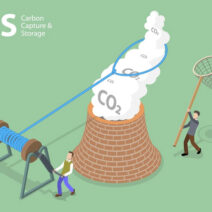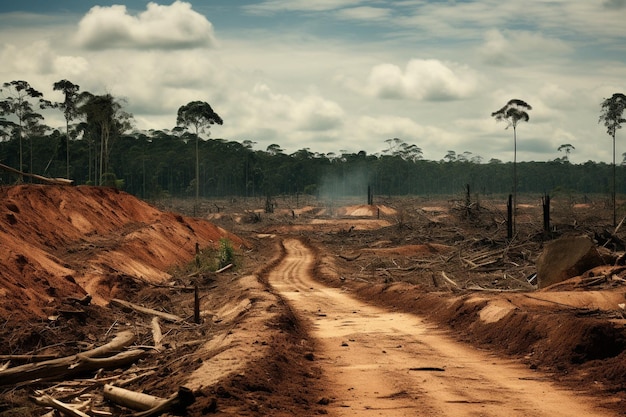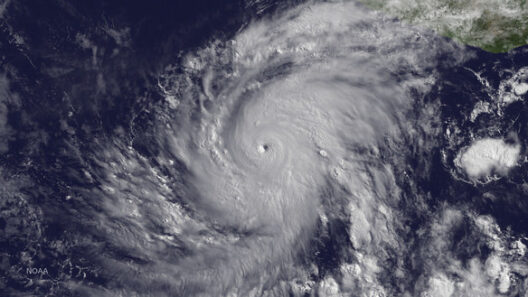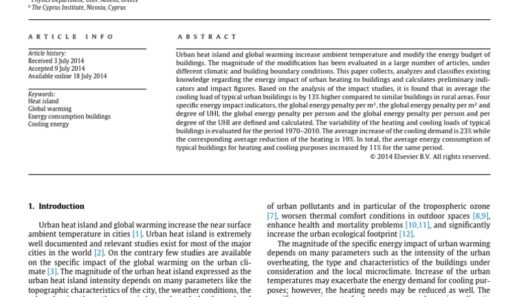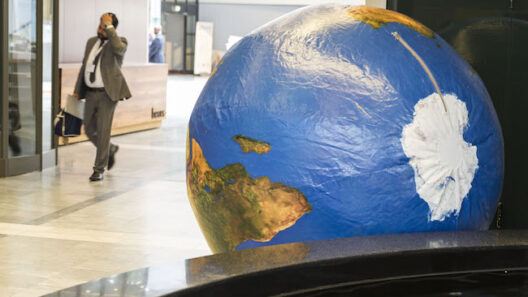Singapore, a gleaming jewel in the heart of Southeast Asia, emerges like a dandelion through pavement—resilient, yet paradoxically fragile. This city-state, with its remarkable urban planning and lush greenery, epitomizes progress and prosperity. However, beneath its shiny surface lies a climate conundrum that warrants scrutiny. As a city-state with limited land and resources, Singapore’s unique contributions to global warming reflect the delicate balancing act required to maintain its growth while navigating the complex realm of environmental responsibility.
To delve into this conundrum, one must first recognize Singapore’s position as a global hub. With an economy heavily reliant on industries such as finance, technology, and logistics, the city-state thrives on a ceaseless influx of energy and resources. The metaphorical clockwork of Singapore ticks in harmony with international trade, leading to an expansion of carbon emissions. As the nation develops, the cacophony of industrial growth drowns out the symphony of environmental sustainability, casting a shadow over its ambition to be a ‘City in a Garden’.
One cannot underestimate the geographical constraints that Singapore faces. Situated just north of the equator, the nation enjoys a tropical climate—characterized by high humidity and abundant rainfall. Yet, this climatic advantage also poses significant challenges. The rising temperatures, driven in part by anthropogenic influences, exacerbate issues such as urban heat islands. With towering skyscrapers basking in the sun, the city-state becomes a cauldron of heat, prompting increased energy consumption for air conditioning and cooling systems, which in turn fuels more greenhouse gas emissions.
As a global financial center, Singapore contributes to carbon emissions through extensive air travel and trade networks. The rise in economic activities correlates with an increase in fossil fuel consumption, leading to an alarming surge in greenhouse gas emissions. To manage this climate crisis, Singapore is embarking on a transformative journey—one that necessitates innovation, commitment, and perhaps most importantly, a collective reckoning with its environmental footprint.
In recent years, the government has taken commendable steps towards establishing a low-carbon economy, unveiling policies laser-focused on sustainability. The Singapore Green Plan 2030 serves as a beacon of hope, illuminating the path toward a greener future. Its vision encapsulates ambitious goals—ranging from reducing waste and enhancing energy efficiency to increasing green spaces and promoting public transport. Yet, the question remains: will these initiatives be robust enough to offset the ongoing emissions stemming from the engines of economic activity?
A notable focus of the Green Plan is the urban landscape, where the government aims to integrate nature with urban life. However, the juxtaposition of vibrant flora and skyscrapers presents an intricate challenge. This endeavor, while appealing, requires substantial investments in technology and infrastructure. Hence, the concept of sustainability cannot simply remain a tantalizing ideal but must evolve into a pragmatic approach that marries economic viability with ecological stewardship.
Moreover, the issue of waste management underscores Singapore’s climate conundrum. With limited land and an increasing population, the city-state grapples with waste disposal and recycling. The community is often likened to a well-oiled machine, yet it produces staggering amounts of waste—creating a pressing dilemma for sustainability. Innovative waste-to-energy plants are being introduced, transforming refuse into a resource, yet the scale of the problem is daunting. A cultural shift towards reducing, reusing, and recycling must accompany technological advancements for meaningful change to materialize.
The transportation sector also embodies a significant arena for improvement, as it contributes substantially to greenhouse gas emissions. The government’s ambition to enhance public transport systems and promote electric and hybrid vehicles reflects a commitment to reducing the carbon footprint but raises questions about accessibility and equity. Transportation in Singapore must pivot from a luxury to a convenience that caters to all socio-economic classes, ensuring that sustainability does not become exclusive to the affluent.
Climate adaptation forms the crux of Singapore’s environmental strategy as well. Rising sea levels, a palpable threat, beckon action. With its strategic positioning by the coast, the potential for inundation looms large. Infrastructure measures, including the construction of sea walls and reclamation projects, offer a semblance of security, yet they stand as a sobering reminder of nature’s unpredictability. The interplay of natural and built environments must harmonize to safeguard Singapore’s future.
Despite these efforts, skepticism remains among scholars and activists. The dichotomy between economic growth and environmental stewardship can appear irreconcilable. Some argue that Singapore, as a small nation, can prioritize climate policies while others declare that an insatiable consumer culture is at the heart of the dilemma. Navigating these conflicting ideologies necessitates an acknowledgment of climate justice—where development does not occur at the expense of the environment or marginalized communities.
In this intricate tapestry, Singapore’s climate conundrum reveals not just challenges, but also a series of unique appeals that resonate locally and globally. It represents the paradox of modernity: where advances in technology and industry coexist with the imperative for environmental preservation. The city-state stands as a microcosm of the greater planetary narrative—illustrating that the road to sustainability is fraught with trials and tribulations but also illuminated by hope and resilience.
Ultimately, Singapore’s response to climate change will serve as a case study for urban centers worldwide. It is a reflection of the challenges faced globally—an acknowledgment that the climb towards sustainability is as steep as it is necessary. The city-state must evolve its policies and practices into a resilient framework that prioritizes the planet alongside progress. Only by addressing this climate conundrum can Singapore hope to flourish as a beacon of sustainability in the tumultuous tale of our changing world.
